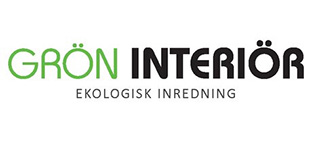The Strongs originally came from Dunster where church records show that a Henry Strong was baptized early in the 18th century. He became a butcher and it was his grandsons who changed the future of the Strong family when two brothers left as drovers – driving the sheep to slaughter at Smithfields in London. Harry and his younger brother James lived at 264 Old Kent Road and eventually started a tannery together in Bermondsey. James had three children. The first was Annie and the second James Beaver Strong – later to become my grandfather. James started work at the family tannery when he was 14 which was fortunate as his father died young and so James and his brother Harry took over the tannery and ran it with their cousins’ husband Arthur Henson Rawle – from whom Arthur, my father, eventually got his name.
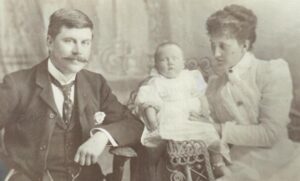 Mabel Bourne, later to become Arthurs mother, was born at home above the family drapery shop in Piccadilly. The house was opposite St James Church and within the sound of Bow Bells. Mabel and her friends used to play in Hyde Park and she went to Queens College, a leading independent girls school on Harley Street in central London. Queen’s has educated young women who have gone on to become leaders in their professions and who have blazed trails in just about every walk of life, no doubt preparing Mabel for her life’s challenges. When she was 10 years old her father Benjamin Addley retired to Sutton in Surrey where they bought a spacious home with a grass tennis court and table for billiards which Mabel learnt to play, and excell at, at an early age. Mabel and her sister Jessie were known as the ‘Beautiful Miss Bournes’. They were active and enterprising and did everything together. They bought bicycles and had riding clothes with divided skirts made to ride in. They rode them to Box Hill and it was on one of these trips that they met James Beaver Strong. This was the beginning of James and Mabel’s romance and 21 years of happy marriage.
Mabel Bourne, later to become Arthurs mother, was born at home above the family drapery shop in Piccadilly. The house was opposite St James Church and within the sound of Bow Bells. Mabel and her friends used to play in Hyde Park and she went to Queens College, a leading independent girls school on Harley Street in central London. Queen’s has educated young women who have gone on to become leaders in their professions and who have blazed trails in just about every walk of life, no doubt preparing Mabel for her life’s challenges. When she was 10 years old her father Benjamin Addley retired to Sutton in Surrey where they bought a spacious home with a grass tennis court and table for billiards which Mabel learnt to play, and excell at, at an early age. Mabel and her sister Jessie were known as the ‘Beautiful Miss Bournes’. They were active and enterprising and did everything together. They bought bicycles and had riding clothes with divided skirts made to ride in. They rode them to Box Hill and it was on one of these trips that they met James Beaver Strong. This was the beginning of James and Mabel’s romance and 21 years of happy marriage.
James and Mabel were married on September 13th, 1918. They bought, Waltair, a large house in Beddington, 12 miles south of London and close to where James’ parents lived. Here they raised their eight children Olive, Violet, forever nicknamed Vi, Walter, Harry, John, my father Arthur, nicknamed Dubs as a child, Oswald, forever nicknamed Tigs and Jessie.
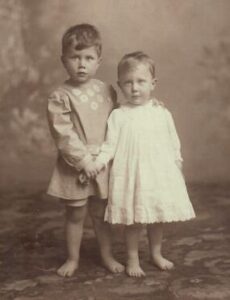
Arthur 3 and Tigs 2
Arthur was born in 1908, the 6th child and 4th son of James and Mabel. All five brothers shared a bedroom next to their parents’ and their three sisters shared an adjacent room. The younger children went to the local kindergarten, the older ones to local schools and at one stage they were all driven by their coachman Willard in a horse and carriage. In winter the carriage was covered by a round circular top that hung for the rest of the year by a pulley on the roof of the coach-house. In the cold weather they used to lie on top of one another to keep warm! It used to get very steamy inside and they whiled away the time by writing funny faces on the window – much to their parents’ disgust! When the carriage, full of children, came up to the cross roads at the top of Crown Hill in the center of Croydon, the police would stop the traffic so they could make it over the top. Very often the poor old horse didn’t make it, so Willard used to shout out for help to the people around and they’d push them over the crest of what was then a steep hill.
Arthur was six years old in 1914 when Wold War I began. He heard that Brussels had fallen and cried because he thought they would never have brussels sprouts again!
The Strongs moved to Court House in Banstead in 1916. Banstead was a small village at the time with a
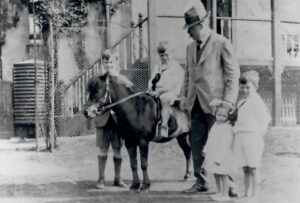
The four youngest with their pony Chip
post office, shop and butcher’s shop. But it had a railway that took James to work every day, via London Bridge. Their new home had a drive up to the house that passed the gardeners lodge, garage and stable. The family all learnt to ride the pony and horses and there was a large greenhouse and vegetable garden where the children each had their own patch. There was also a cowshed, pigsty, chicken run, a pond and a big barn where the children played. Mabel was an excellent sportswoman and took part in all the family games as sports were important to the Strongs.
Tennis was a central part of their family social life with week-end tennis parties during the summer months that were planned 5 to 6 weeks in advance. They had 3 tennis courts – 2 grass courts and 1 asphalt hard cour. In winter the hard court would be used for hockey or netball and there was also a board to the side to practice against. The pony was used to pull the lawn mower that cut the grass courts wearing leather shoes to preserve the grass!
They had a billiard room, a conservatory and gym which was added later, the latter with parallel bars fixed to the wall, climbing ropes and rings. The Strong children were all encouraged to be physically active in the gym, to ride and to play billiards and tennis. Mabel was a stickler for health and activity and the children were told to have a cold bath every morning!
Having the hot water last for everyone was a challenge, with a household of at least 10 people, particularly for baths. Although the baths were not in the same room, they always had to have two baths running at the same time to avoid one hogging all the hot water. One time when Mrs. Kenny of Waterford came to stay, Mabel asked her if she would like to have a bath, which she gladly accepted. Mabel responded, ”Alright, then you can have it with Arthur.” Arthur remembered the expression on Mrs. Kenny’s face all his life! Of course Mrs. Kenny didn’t know that the baths were in separate rooms!
The Strong’s had 3 servants including a cook who worked ‘downstairs’. The servants would come up to report, but none of the family ever went downstairs.
Arthur would tell how ”Weekend teas around the huge Wellingtonian tree on the lawn were quite the experience. Thinly cut bread and butter, to start and end with; cucumber sandwiches; home-made plum cake; sponge cake; and one iced cake bought from Riddingtons or Fullers. I would invariably overeat which inevitably resulted in what was known as a ’bilious attack’.”
Later that night when Arthur felt sick he would call out ”Mother, Mother, Mother, quick, quick, quick!” On one such night during the beginning of the war Arthur said to his Mother, ”I can hear the trams.” ”Yes,” she said, ”they are very clear to-night.” But the trams never ran at night. It was a German zeppelin that sounded like a tram. The word zeppelin referred to rigid airships that were used in bombing raids over Britain in World War I. The bomb that was dropped in Chatsworth Road, Croydon around 1915, made a crater in the middle of the road that stretched from one side of the road to the other, and also made a deep impression on Arthur who was 7 at the time.
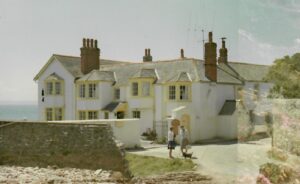 The family spent their summer holidays at Croyde Bay in North Devon not far from Dunster. They rented Croyde Bay House for seven years. The house, which later became a small hotel, lay on a cliff right by the sea. The Strongs brought their horses and bicycles with them for the summer and always had lots of friends and cousins to stay. They could be as many as twenty people which was perfect for team games like hockey and football that they all loved to play.
The family spent their summer holidays at Croyde Bay in North Devon not far from Dunster. They rented Croyde Bay House for seven years. The house, which later became a small hotel, lay on a cliff right by the sea. The Strongs brought their horses and bicycles with them for the summer and always had lots of friends and cousins to stay. They could be as many as twenty people which was perfect for team games like hockey and football that they all loved to play.
The yearly family journey to Croyde started by coach to Waterloo station where they took the train to Devon. Two employees from the family firm always got to the station early to keep two carriages for the family – much to the shame of the older children in the family. Their travel companions were the governess and nurse Jones who had a hamper of food to dole out. Their coachman would take their carriage down to Devon the day before, pick them up at the local station, and drive them to Croyde.
Eventually a large Italian Lancia was bought. The year they got the car the older children were driven to Devon by Harris. At this time Arthur was one of the youngest children who couldn’t fit into the car and went by train from Waterloo.
At Croyde, James and Mabel liked to take family walks to Baggy Point placing pieces of chocolate in rabbit holes as a treasure hunt on the way to motivate the children to take the walk! James returned to Banstead and work most weeks, returning on the Friday with a big case of fruit and vegetables from the garden that everyone helped to unpack.
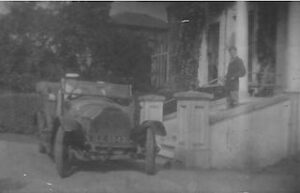 The Lancia was driven by Harris the family driver. His side of the car didn’t have a door. The only door was on the other side where there was a sliding seat. There were two folding seats in the middle row and three seats in the back. Arthur remembers how, ”The car only went at 50 miles per hour but was quite the attraction when we drove to Devon as many people had never seen a car before. There were tram rails from Wallington to Waddon along Stafford Road and this was the straightest stretch of road where Harris occasionally let the Lancia go full out at 60 mph which in those days was a high speed!”
The Lancia was driven by Harris the family driver. His side of the car didn’t have a door. The only door was on the other side where there was a sliding seat. There were two folding seats in the middle row and three seats in the back. Arthur remembers how, ”The car only went at 50 miles per hour but was quite the attraction when we drove to Devon as many people had never seen a car before. There were tram rails from Wallington to Waddon along Stafford Road and this was the straightest stretch of road where Harris occasionally let the Lancia go full out at 60 mph which in those days was a high speed!”
Driving home in the Lancia after the holidays in Devon could be an adventure. They would drive along what is known as the Hogs Back. The tyres in those days were very narrow and made in Germany with steel studs that ripped the tarmac off and damaged the road. On one such occasion they ended up with five punctures and they filled the tires with cardboard so that they could get home!
In those days learning to drive didn’t involve getting a license so one afternoon when Arthur was 18, Walter said he would teach him how to drive. They drove about an hour and when they got back Arthur knew how to drive. Next morning Arthur suggested to Tigs who was 17, that they should drive to Epsom Downs some five miles away. Arthur said that he could teach Tigs when they got to the Downs and then Arthur would drive back. On their way back, Arthur said, ”I can never understand anyone wanting to go more than 30 mph!” They were now both experienced drivers and never looked back! Arthur would drive his own car until he was 93 years old.
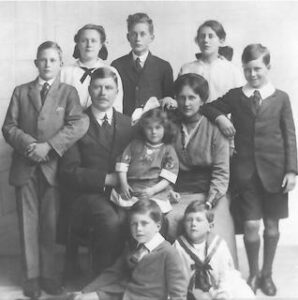 James developed stomach cancer in 1918. Before he died he said goodbye to each of his children individually and had a picture taken with each of them. He told each child how much he loved them and that it was up to them to keep the family together. It was only when James’ children were adults that they discovered this, but it could well have been why the family have stayed close for several generations even though they were physically miles apart.
James developed stomach cancer in 1918. Before he died he said goodbye to each of his children individually and had a picture taken with each of them. He told each child how much he loved them and that it was up to them to keep the family together. It was only when James’ children were adults that they discovered this, but it could well have been why the family have stayed close for several generations even though they were physically miles apart.
Towards the end of his life James only wanted Mabel to look after him even though there was a nurse in the background if needed.
Mabel was now left with 8 children under the age of 17 and the family all had to make changes, though it is no doubt that the greatest challenges were Mabels as James had managed all their financial affairs. Managing a large household, family daily life and events, showed how gifted Mabel was. But Mabel had never written a cheque or carried out a financial transaction in her life so James had arranged for her to be helped weekly by a close friend until she was able to cope with the family estate on her own. Meanwhile she kept the family together supporting their different interests best she could.
The challenges were soon made real for the whole family as Mabel took decisions to downsize selling the Lancia and Court House in Banstead and moving the family to Stone House, a smaller home in Caterham. this must have been a huges wrench as they had only lived there a short time.
The four eldest children found work. Olive had already trained as a nurse, Vi trained to be a vet but eventually worked as secretary to photographer Howard Coster. Walter as the eldest son left school at 17 to learn the family leather business in Bermondsey and Harry found work at a local garage.




